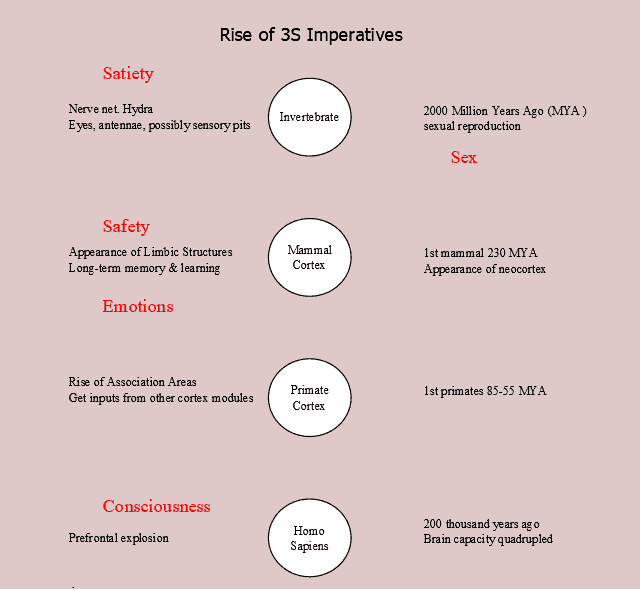Figure 1 depicts how much more primitive the 3S imperatives (Satiety, Sex, and Safety) are than emotions and consciousness.
Satiety
The imperative to satisfy the nutrient requirements for the organism to flourish is obvious in all organisms that continue to exist. This imperative comes built in to each organism species that did not extinguish with the first member of the species.
Sex
Sex reproduction started nearly 2 billion years ago with the invertebrates. It’s built very deeply into our genetic code.
The imperative is ingrained, however with 18-30 thousand genes in the human genome, actual mode of sexual expression is not controlled by a single gene. Also personal experience shapes behavior.
Safety
Safety requires brain capacity beyond immediate handling of sensory input as well as the memory to learn relationships between situations, its actions, and results. By 230 million years ago (MYA), the mammals had that capability.
Some people face their fears; others flee from them. Both types have an awareness of danger, but their reactions depend not solely on the awareness, but on other physical attributes and actual experiences.
Emotions
Emotions required larger association of the various sensory information, to enable choosing between options, that oftentimes satisfied none of the 3S Imperatives completely. These association areas exploded with primates (85-55 MYA).
Emotions are not hard-coded at birth, but there exists decided tendencies which are molded by the understanding an individual applies to his daily life. Such as, good things happen and should be expected or despite his best efforts they will always be seen as inadequate.
Consciousness
Consciousness and planning for future conditions requires even now our full effort. Those abilities have evolved quite recently, within the most recent two hundred thousand years.
The greatly expanded frontal cortexes of homo sapiens allow us to consider not only the current environment but potential environments of the future. We consider how our actions now will affect our prospects in the future and adjust our actions accordingly.
That is on our most conscious, most deliberate days.
Nature-Nurture discusses the critical periods of learning, which shapes our mental worldview
Culture in Nurture points out the significant role of culture, especially when the demand of the 3S imperatives does not mandate our response
Semantic Maps delivers insight into how we integrate the 3S Imperatives
Milestones to Human Thought discusses the meaning gradations from reflex to choice (with mid-steps of instincts and habits)

